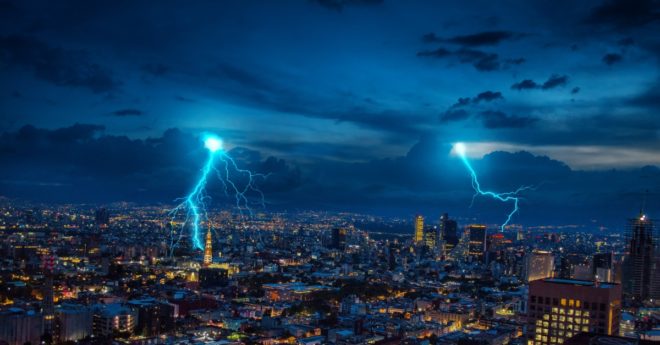With the price of bitcoin jumping to fresh 2020 highs last month, those running the digital currency’s underlying infrastructure are pondering the consequences. Namely, the routing node operators at the heart of Bitcoin’s Lightning Network are busily bracing for the curious new users that usually come with a bull run.
Bitcoin’s Lightning Network promises faster and cheaper payments, without the occasionally crazy fees associated with the underlying Bitcoin network.
Read more: What Is Bitcoin’s Lightning Network?
The platform is still new, in Bitcoin time, having launched for real payments in 2018. As such, it has its kinks. Developers still call using it “reckless,” because it’s new enough that it may be hiding bugs that could lead to loss of funds. Would the network be able to handle an influx of new users suddenly jumping to the Lightning Network?
Whether it can or not, those who run routing nodes are busily preparing for such a scenario.
Bitcoin Lightning “routing” nodes are the ones tasked with passing on payments through the network, until they reach their destination. Many operators of Lightning routing nodes are beefing up their nodes to make sure they can help to support a sudden increase in users.
Why use the Lightning Network?
But first, why would Bitcoin users move to Lightning?
One word: Fees. Bitcoin fees are now higher than they’ve been in more than two years, reaching an average of $13 per transaction. With Lightning, users can avoid these fees.
“Higher bitcoin prices go hand in hand with higher transaction fees for on-chain payments,” Tudor Iova, Lightning routing node operator and founder of BTCfactura, told CoinDesk. He also noted he has seen more users tapping Lightning as fees have risen.
In contrast, Lightning payments usually cost less than a cent, making the payment method more and more attractive as fees rise.
That said, setting up a Lightning channel – a means for sending Lightning payments – requires a Bitcoin transaction. It’s kind of like a one-time setup fee for creating a Lightning account.
Say Alice puts $50 into a Lightning account and pays a $3 fee. Once that’s done, she can make as many transactions as she needs with that $50 – like 16 transactions for 16 cups of coffee.
With the Lightning Network, fees for each transaction will be negligible, averaging roughly a satoshi, worth a fraction of a cent.
Dodging bitcoin fees
Channels are the lifeblood of the Lightning Network. They’re also the means by which Lightning routing nodes pass along payments to others.
But, again, creating such channels requires on-chain transactions, which can be expensive when the network is congested. More transactions in the Bitcoin “mempool” – a waiting area for transactions – means higher fees.
Lightning routers are actively scouting out the best times to open channels. “We’re all watching the mempool very closely to find opportunities to open Lightning channels inexpensively as the extra space in blocks dries up completely,” said pseudonymous Lightning routing node operator Jestopher.
Jestopher expects the block space to become more scarce when (and if) a bull run commences. This happened last week, for instance, after the price shot up.
Another point routers are keeping in mind is that fees are usually lower on the weekends, when users are sending fewer transactions.
Lightning routers are busy learning and researching the best ways to tackle these issues, so that if a bunch of new users flock to the network, payments will remain smooth.
“What we are doing, and suggesting our users do, too, is to opening channels on weekends, when the fees peak off. Later, during the week, you can use Lightning payments and avoid horrendous [fees]. Else you can end up paying a fee that is higher than the price of the goods purchased,” Iova said.
Building liquidity and connections
Routing nodes are also open channels with a variety of peers designed to reduce failed transactions and to make the overall network more robust so payments don’t fail for users.
“We are preparing ourselves for a bull run by opening new channels and improving our Lightning node connectivity to other nodes, in order to make it possible for users to use our node Transylvania for payments and routing, when necessary,” Iova said.
The other trick is that once a Lightning channel is open, that’s not necessarily the end of the struggle. “Lightning requires lots of liquidity management, which is unfamiliar to most folks outside of Wall Street,” Jestopher said.
In short, it’s not enough to just put money into the Lightning Network; the money needs to be moved to the right spots in order for a routing node to build a path that can be used to send payments for users. Not to mention, every time a payment is made by a routing node, this liquidity is moved around. So, routing nodes need to constantly be managing where the coins are.
In fact, there’s an entire Telegram channel “LN mutual balanced channels” devoted to helping fellow Lightning users find peers and liquidity for their channels. Jestopher recently created a poll there asking fellow routing-node operators what they’re doing to prepare for a bull run. The most votes went to “consolidating liquidity into fewer, larger channels” and “opening channels to routing peers” to build more connections with the network.
“I think the shared goal is to find out how to operate routing nodes in a sustainable way where we don’t have to clog up the mempool when it gets expensive,” Jestopher said, pointing to Lightning Loop and ThunderHub as helpful tools for boosting liquidity where needed.
Startup Lightning Labs also released a new marketplace Monday for buying and selling liquidity, an innovative way of addressing this issue.
Thousands of new users?
Even if many Lightning routers are preparing, some think the network is already equipped for more action.
“I think the Lightning Network is already capable enough to support thousands of new users,” Bitfinex CTO Paolo Ardoino told CoinDesk. The cryptocurrency exchange runs both the second and third largest Lightning routing nodes on the network and was one of the first exchanges to support Lightning payments.
“Spinning up new nodes and interconnecting them with others is not a very complex job, so I believe that with the growth of the user base we’ll definitely see a strengthening of the Lightning global network. I think our Lightning Network node and in general, the Lightning Network global network of routing nodes will be able to cope with an increased demand,” Ardoino added.
Iova had a similar view.
“I think the Lightning infrastructure is a bit underestimated, and many people think it can’t cope with the traffic, [it’s] not reliable enough or it can handle only micropayments. Well, things are changing in this part of the network,” he said, pointing to public Lightning network data showing that 2020 brought in a 50% increase in the number of nodes.




